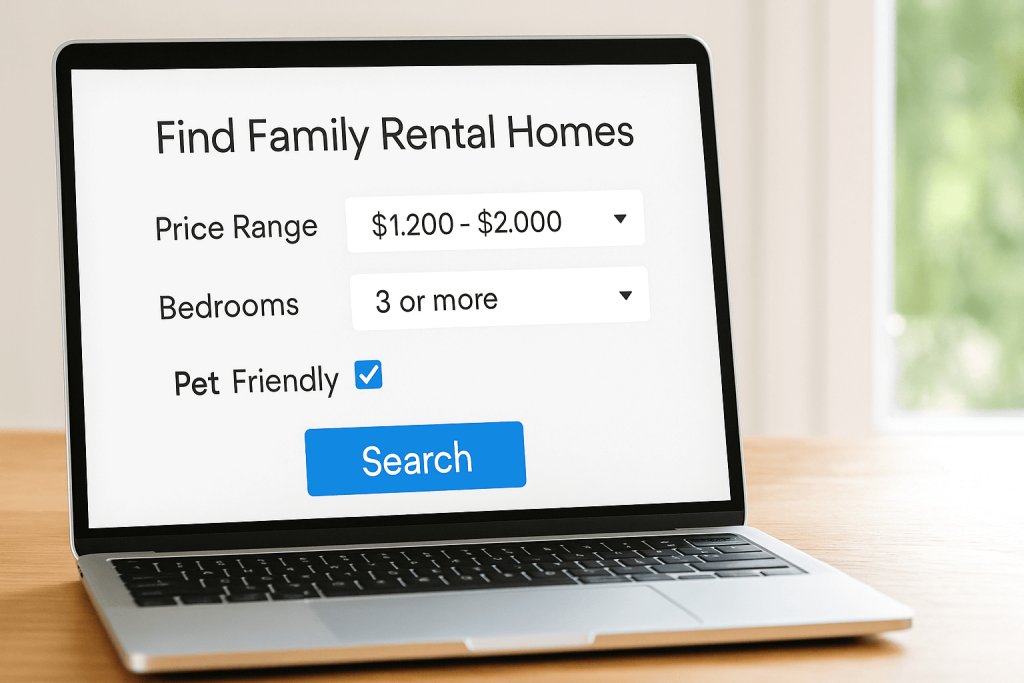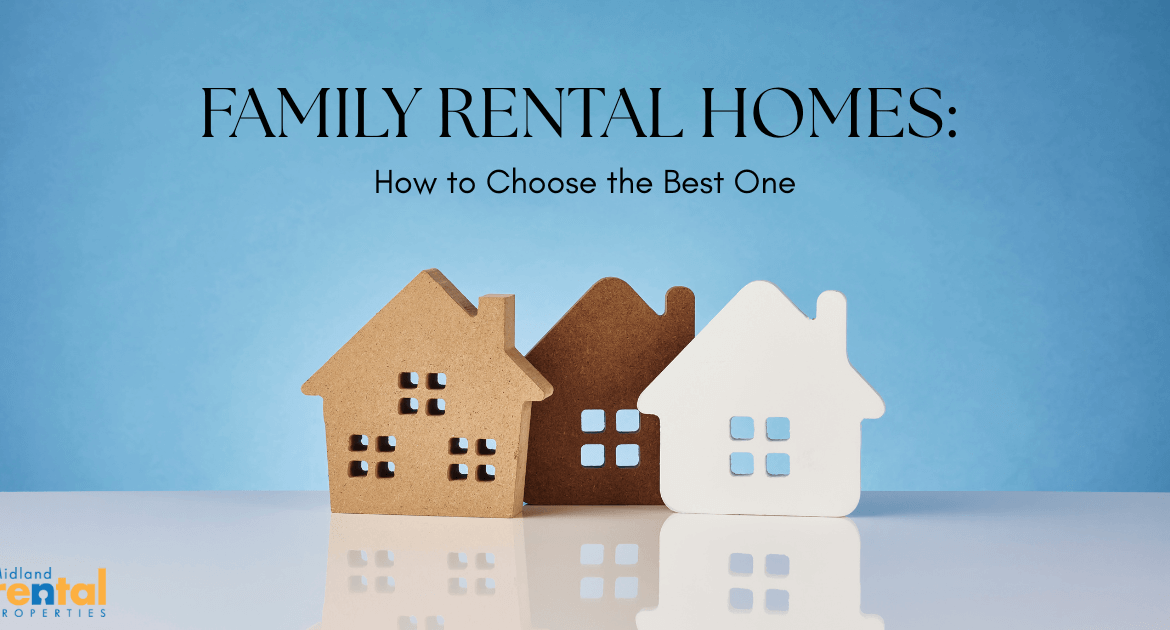A family rental home is a property designed with space, safety, and amenities that fit the needs of households with children or multi-generational families.
Finding the right rental for your family isn’t just about size or price—it’s about choosing a place where everyone feels safe, comfortable, and connected to the community. Families have unique needs compared to singles or couples, from school access to space for kids and pets.
If you’re searching for family rental homes, this guide will walk you through what to look for when evaluating properties so you can find the best fit for your household.

1. Location Matters Most
For families, location is often more important than the home itself. A rental in the wrong neighborhood can add daily stress, while the right one can simplify life. Consider:
- School districts – Research ratings and distance. Families often prioritize living near strong schools.
- Commute times – Shorter commutes mean more time with your kids.
- Neighborhood vibe – Visit local parks, playgrounds, and family-friendly restaurants.
- Proximity to essentials – Grocery stores, medical offices, and after-school activities all matter.
Pro Tip: If you’re moving to a new area, renting in Midland, MI or nearby neighborhoods first allows your family to “test-drive” a community before buying.
2. Safety and Security
Nothing matters more than safety when choosing a rental for your family. Before signing a lease, take time to:
- Look up local crime rates.
- Drive through at different times of day to check lighting and traffic.
- Ask about property features like secure locks, cameras, or gated access.
- Talk to current tenants about their experiences.
These steps help ensure peace of mind and a safe environment for your children.
3. Space That Fits Your Family
Kids grow—and so do their needs. Make sure the property can support your family today and in the future:
- Bedrooms & bathrooms – Enough for everyone to have privacy and avoid morning traffic jams.
- Storage – Room for strollers, bikes, sports gear, and seasonal items.
- Outdoor space – A fenced yard, nearby park, or shared community green space is a huge plus.
- Flexible layouts – Open floor plans and multipurpose rooms adapt as your family changes.
4. Amenities That Make Life Easier
The right amenities make family life smoother:
- Laundry – In-unit washers/dryers save time and hassle.
- Modern kitchen appliances – A dishwasher and full-size fridge are musts.
- Parking – Driveways, garages, or safe street parking matter when hauling groceries and kids.
- Heating & cooling – Reliable climate control keeps everyone comfortable year-round.
- Community perks – Some family rental homes include access to playgrounds, pools, or walking trails.
Even small amenities add up to a big difference in daily life.
5. Budget and Long-Term Flexibility
Housing should fit comfortably within your budget. Experts recommend keeping rent under 30% of household income (HUD source). Families also need to think about:
- Lease terms – Do you want a shorter lease for flexibility, or a longer one to lock in stability?
- Renewal options – Ask about rent increases or multi-year agreements.
- Utilities & hidden costs – Clarify what’s included so there are no surprises.
Budgeting for rent, utilities, and family needs ensures your home is sustainable for the long haul.
6. Lease Terms & Future Planning
Families often prefer stability. When reviewing leases:
- Ask about renewal options to avoid unexpected moves.
- Consider whether the property allows you to grow into it—like welcoming another child or adopting a pet.
- Check restrictions (on painting, outdoor play equipment, or pets).
The right rental should support your plans, not limit them.
7. Budgeting Example for Families
Knowing the “30% of income” rule is helpful, but seeing it applied makes it real:
- A family earning $70,000 per year should aim to keep rent at or below $1,750/month.
- A family earning $100,000 per year should target $2,500/month or less.
Pro Tip: Ask if utilities are included. A $1,600 rental may actually cost $1,900 once utilities are factored in.
8. Tips for Touring Rentals With Kids
Touring homes with children in tow can be stressful, but it’s also a chance to involve them in the decision:
- Check noise levels – Stand in bedrooms and listen for traffic or neighbor noise.
- Look at storage solutions – Is there room for toys, school supplies, and sports gear?
- Test internet speed – Reliable Wi-Fi is crucial for homework and streaming.
- Safety check – Are windows secure? Are stairs safe for little ones?
- Let kids explore – Small choices, like picking their room, help them feel excited about the move.
9. Family Rental Checklist
✅ Safe neighborhood near schools, parks, and family amenities
✅ Enough bedrooms and bathrooms for your family size
✅ Storage space for toys, bikes, and essentials
✅ Outdoor play space or nearby parks
✅ Reliable safety features (locks, lighting, secure entry)
✅ In-unit laundry and modern kitchen appliances
✅ Parking that fits your family’s needs
✅ Lease terms balancing flexibility with stability

Final Thoughts
Finding the best home for your family is about more than square footage. Location, safety, space, and amenities all play critical roles in creating a supportive environment.
At Rent Mid, we make it easier for families to find the right rental homes and duplexes.
Browse our family-friendly rental listings today and schedule a tour with our team. Your next home is waiting.
FAQs
What makes a rental home family-friendly?
Family-friendly rentals are safe, near schools and parks, and offer space, storage, and amenities designed for children and parents.
How do I know if a neighborhood is good for families?
Check school ratings, talk to neighbors, and visit at different times of day. Look for sidewalks, playgrounds, and community spaces.
Should families rent a house or a duplex?
Houses usually provide more space and privacy. Duplexes can be budget-friendly and offer community-style living.
What amenities should families look for in a rental?
In-unit laundry, modern kitchens, storage, outdoor space, and safe parking are highly valuable for families.
How much should a family spend on rent?
Aim for no more than 30% of household income. This leaves room for savings, childcare, and unexpected expenses.









